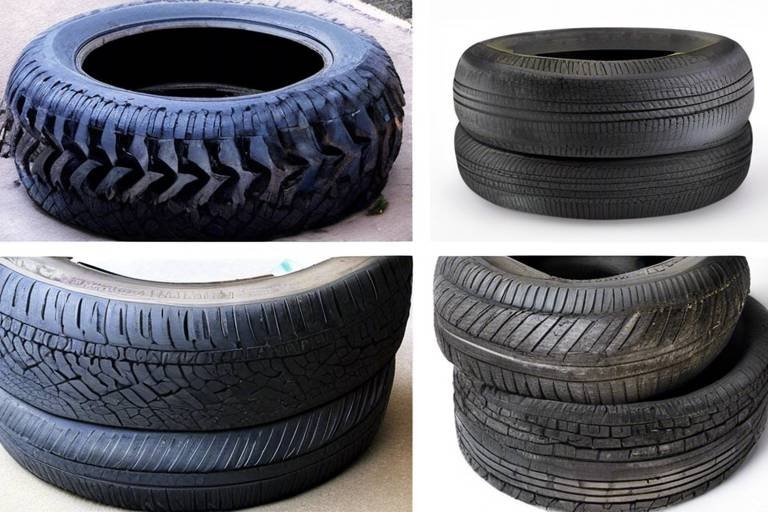Novelty Items from Upcycled Everyday Objects
In a world increasingly aware of environmental issues, the concept of upcycling has emerged as a beacon of creativity and sustainability. Imagine taking something that would typically end up in a landfill and transforming it into a unique novelty item that not only serves a purpose but also tells a story. This article explores the fascinating realm of upcycling, where everyday objects are given a second life, turning waste into wonder. From plastic bottles to old clothing, the possibilities are endless, and the results can be nothing short of magical. So, let’s dive in and discover how you can unleash your creativity and make something extraordinary out of the ordinary!
Understanding the concept of upcycling is essential for anyone looking to create novelty items. At its core, upcycling is about taking items that have lost their original purpose and breathing new life into them. It’s like giving a second chance to objects that would otherwise be forgotten. This creative process is not just about crafting; it’s a philosophy that encourages us to see the potential in everything around us. Every time you look at a discarded item, ask yourself: What can this become? The beauty of upcycling lies in its ability to challenge our perceptions and inspire us to think outside the box.
Many everyday items can be repurposed into novelty creations. The key is to look at your trash in a new light. Instead of tossing out items like plastic bottles, old clothes, or even cans, consider how they can be transformed. Here are some common objects that are perfect for upcycling:
- Plastic Bottles: These versatile materials can become planters, storage solutions, or decorative art pieces.
- Old Clothing: Rather than discarding it, think of turning fabric into bags, quilts, or fashionable accessories.
- Cans: With a little creativity, cans can be turned into lanterns, pencil holders, or even garden decorations.
By viewing these items through a creative lens, you can unlock a world of possibilities!
Plastic bottles are one of the most versatile materials available for upcycling. They can be transformed into a myriad of novelty items that are not only functional but also beautiful. For instance, you can cut them in half and fill the bottom with soil to create stunning planters for your herbs or flowers. You could even paint them and hang them on your walls as unique art pieces that add a splash of color to your home. The only limit is your imagination!
Instead of discarding those old clothes that no longer fit or that you've grown tired of, consider upcycling them into something new and exciting. For example, old t-shirts can be transformed into trendy tote bags or quilts that tell a story of your fashion journey. You can even create fashionable accessories like headbands or bracelets from fabric scraps. Upcycling old clothing not only saves money but also contributes to a more sustainable wardrobe.
Upcycling offers numerous benefits beyond just creativity. It’s a win-win situation for both you and the environment. Here are some key advantages:
- Environmental Impact: By reusing materials, you reduce waste and decrease the demand for new resources.
- Cost Savings: Upcycling can save you money, as it often requires little to no investment in new materials.
- Personal Satisfaction: There’s something incredibly fulfilling about creating something unique from items that would have been discarded.
Embracing upcycling is not just a trend; it’s a lifestyle choice that can lead to a more sustainable future.
If you're eager to get started with upcycling, there are countless DIY projects that are both fun and easy to follow. Each project allows you to unleash your creativity and make something truly unique. For instance, you can create:
- Home Decor: Transform old picture frames into decorative wall art or use glass jars as chic storage solutions.
- Gifts: Handmade gifts from upcycled materials can be more meaningful and personal than store-bought items.
Not only will you enjoy the process, but you’ll also end up with beautiful items that showcase your personality and creativity.
For those eager to dive into the world of upcycling, there are plenty of resources available to inspire and guide you. Websites, books, and community groups dedicated to upcycling can provide you with valuable tips and project ideas. Whether you’re looking for tutorials or simply want to connect with like-minded individuals, these resources can be incredibly helpful. Don't hesitate to explore online platforms or local workshops to fuel your creativity!
Q: What is upcycling? A: Upcycling is the process of transforming waste materials or unwanted products into new items of better quality or environmental value. Q: How can I start upcycling at home? A: Begin by collecting items you no longer use, such as plastic bottles or old clothing. Research DIY projects online and start with simple transformations. Q: Are there any costs associated with upcycling? A: Upcycling can be very cost-effective, often requiring minimal investment in new materials. Most projects utilize items you already have at home. Q: Can I sell upcycled items? A: Absolutely! Many people sell their upcycled creations at local markets or online platforms, turning their hobby into a small business.
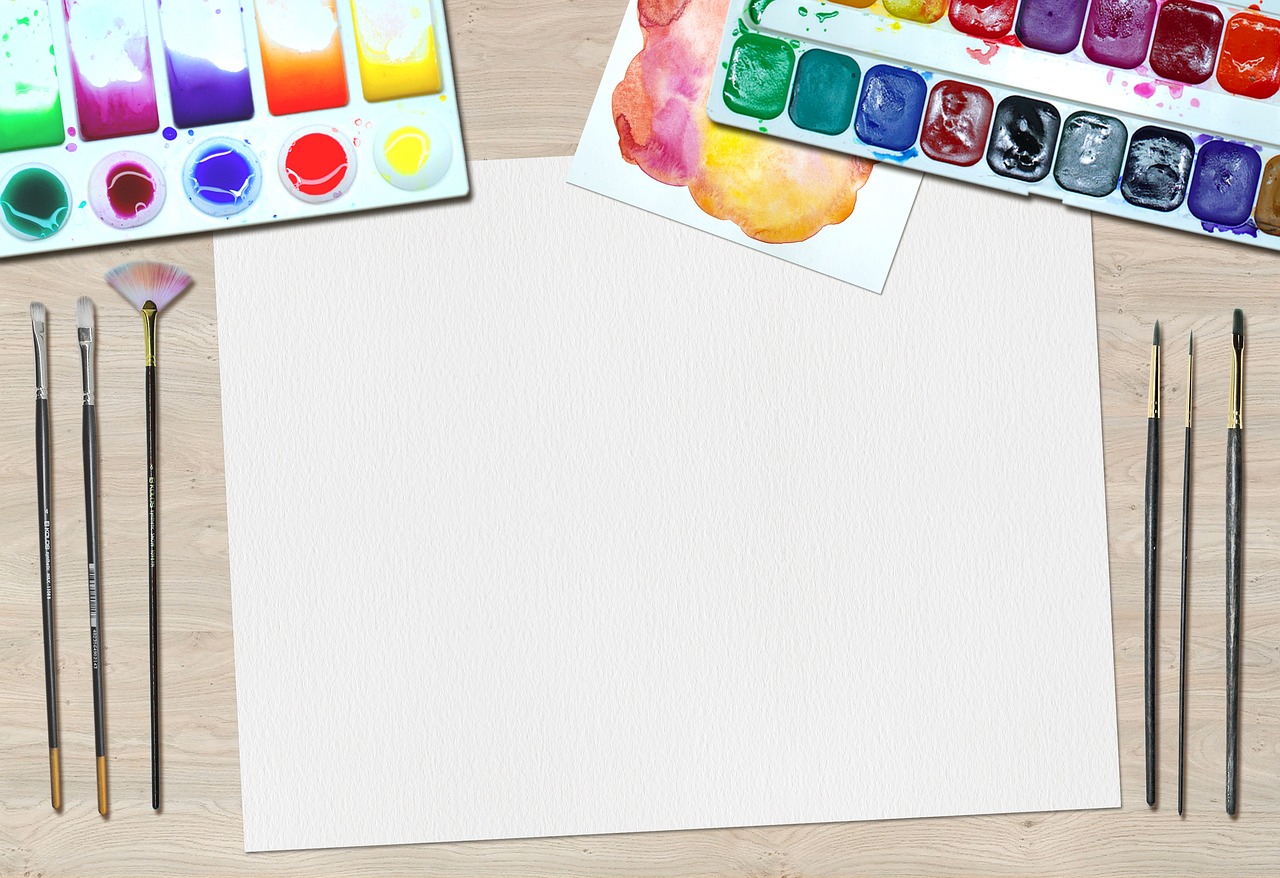
The Art of Upcycling
Understanding the concept of upcycling is essential for anyone looking to create novelty items. At its core, upcycling is about taking what we often consider waste and breathing new life into it. Imagine a world where discarded objects are transformed into something beautiful, functional, and unique. This philosophy encourages us to see potential in the things we usually throw away, turning trash into treasure. It’s like looking at a blank canvas and envisioning a masterpiece waiting to happen.
When we engage in upcycling, we are not just creating art; we are also making a statement. It’s a way of saying, “I value creativity and sustainability.” By reimagining everyday objects, we challenge the traditional notions of consumption and waste. Every time we choose to upcycle, we’re participating in a larger movement that promotes environmental responsibility. This creative process can be both fulfilling and rewarding, as it allows us to express our individuality while also contributing to a healthier planet.
So, how does one begin this artistic journey? The first step is to open your eyes to the possibilities around you. Look at your surroundings—your home, your garage, or even your local thrift store. What do you see? A broken chair? A stack of old magazines? These items can be the building blocks of your next project. The beauty of upcycling lies in its versatility; there are no strict rules, only guidelines that encourage creativity.
Here are some ideas to spark your imagination:
- Transforming furniture: A coat of paint and some new upholstery can turn a dated piece into a modern masterpiece.
- Crafting home decor: Old glass jars can become stunning candle holders or vases with a little creativity.
- Creating fashion: A pair of jeans can be turned into a stylish bag or a funky pair of shorts.
As you embark on your upcycling journey, remember that the process itself is just as important as the end result. Embrace the imperfections and enjoy the experimentation. Each project is an opportunity to learn and grow, both as a creator and as a conscious consumer. In the end, upcycling is not just about making something new; it’s about making a difference.
Q: What materials can I upcycle?
A: Almost anything! Common materials include plastic bottles, old clothing, furniture, glass jars, and even scrap wood. The key is to look at these items with a creative eye.
Q: Do I need special skills to start upcycling?
A: Not at all! Upcycling can be as simple or complex as you want it to be. Start with easy projects and gradually take on more challenging ones as you gain confidence.
Q: Where can I find inspiration for upcycling projects?
A: Inspiration can be found everywhere! Check out social media platforms like Pinterest and Instagram, visit local craft fairs, or join upcycling communities to share ideas and get feedback.
Q: What are the environmental benefits of upcycling?
A: Upcycling reduces waste, conserves natural resources, and decreases the need for new materials. By giving old items a new purpose, you help minimize your carbon footprint and contribute to a more sustainable world.

Common Everyday Objects to Upcycle
When it comes to upcycling, the possibilities are as endless as your imagination! Many of us have a treasure trove of everyday items lying around our homes that we often overlook. Instead of tossing them in the trash, why not transform them into something unique and functional? Upcycling is not just about saving the planet; it’s also about unleashing your creativity. Let’s dive into some common household objects that can be repurposed into fabulous novelty items!
First up, we have plastic bottles. These ubiquitous containers are more than just one-time-use items. With a little creativity, they can become stunning planters, quirky storage solutions, or even decorative art pieces. Imagine turning a simple plastic bottle into a vibrant hanging planter for your herbs or flowers! It’s a fun way to bring some greenery into your home while reducing plastic waste. Plus, they can be painted or decorated to match your personal style, making them a true reflection of your personality.
Next, let’s talk about old clothing. Instead of letting those outdated jeans or t-shirts gather dust in the back of your closet, consider upcycling them into something new. The fabric can be transformed into a trendy tote bag, a cozy quilt, or even fashionable accessories like headbands or bracelets. With a few simple sewing techniques, you can breathe new life into your wardrobe and create one-of-a-kind pieces that tell your story.
Another often-overlooked item is glass jars. These versatile containers are perfect for a variety of upcycling projects. From organizing your pantry to creating beautiful candle holders or even rustic centerpieces, glass jars can serve multiple purposes. You can easily decorate them with paint, twine, or even lace to match your home decor. Plus, they make great gifts when filled with homemade goodies or crafted items!
Let’s not forget about cardboard boxes. These sturdy structures can be transformed into anything from decorative storage bins to imaginative playhouses for kids. A little paint and some creativity can turn a plain cardboard box into a stylish piece of decor or a fun play item. You can even create a mini garden by stacking boxes and filling them with soil and plants!
Lastly, consider tin cans. After enjoying the contents, don’t toss them out! With a bit of cleaning and decorating, tin cans can be turned into charming pencil holders, herb planters, or even lanterns. Just imagine the glow of candles shining through beautifully decorated tin can lanterns during a cozy evening at home!
In summary, the world of upcycling is filled with opportunities to turn everyday objects into something extraordinary. By looking at your trash with a creative eye, you can find inspiration everywhere. So, the next time you're about to throw something away, pause and think: how can I transform this into something new? Your creativity can not only help reduce waste but also bring joy and uniqueness into your life!
- What is upcycling? Upcycling is the creative process of transforming waste materials or unwanted products into new items of better quality or for better environmental value.
- Can I upcycle anything? Almost anything can be upcycled! From plastic bottles to old furniture, the key is to see the potential in everyday items.
- Is upcycling cost-effective? Yes! Upcycling can save you money since you’re repurposing items you already own instead of buying new ones.
- Where can I find ideas for upcycling projects? You can find inspiration online through blogs, social media platforms, and DIY websites dedicated to upcycling.

Plastic Bottles
When you think about , what comes to mind? Perhaps a refreshing drink on a hot day or the annoyance of seeing them littered everywhere? But what if I told you these ordinary items hold immense potential for creativity? Yes, plastic bottles can be transformed into a myriad of innovative and functional novelty items that not only serve a purpose but also look fantastic! Let’s dive into some exciting ways to repurpose these everyday objects.
Firstly, you can turn plastic bottles into beautiful planters. With a little creativity and some basic tools, you can cut them in half, fill them with soil, and plant your favorite flowers or herbs. Imagine a row of colorful plants adorning your balcony or windowsill, all thanks to your upcycled bottles! Not only do they add a splash of color, but they also help reduce waste. Plus, it’s a great conversation starter when friends ask about your unique gardening style.
Another fantastic idea is to create storage solutions. We all have that one drawer or closet overflowing with miscellaneous items, right? Why not use plastic bottles to organize them? By cutting the bottles into various sizes, you can create custom containers for everything from craft supplies to office tools. You could even decorate them with paint or fabric to match your home decor. Suddenly, your storage problems are solved, and you’ve contributed to a greener planet!
And let’s not forget the fun side of upcycling! You can craft decorative art pieces from plastic bottles. With some scissors, paint, and a bit of imagination, you can turn these bottles into stunning sculptures, chandeliers, or even wall art. The possibilities are endless! Picture a vibrant flower made from colorful bottle bottoms, or a whimsical wind chime that dances in the breeze. Not only do these creations beautify your space, but they also showcase your commitment to sustainability.
In summary, plastic bottles are not just waste; they are a treasure trove of potential. By viewing them through a creative lens, you can transform them into functional and artistic items that enhance your life while being kind to the environment. So, the next time you finish a drink, don’t toss that bottle in the trash. Instead, let your imagination run wild and consider all the incredible things you could create!
Q: What types of plastic bottles are best for upcycling?
A: Most plastic bottles, especially those made from PET (like soda and water bottles), are great for upcycling. Just ensure they are clean and free from labels before starting your projects.
Q: Can I use plastic bottles for food storage?
A: Yes, but it's essential to use bottles that are food-safe and have not been previously used for non-food items. Ensure they are thoroughly cleaned before use.
Q: What tools do I need to start upcycling plastic bottles?
A: Basic tools like scissors, a craft knife, paint, and glue are often enough to get you started. Depending on your project, you might need additional supplies like soil for planters or string for wind chimes.
Q: Are there any safety concerns when upcycling plastic?
A: Always handle sharp tools with care and ensure proper ventilation when using paints or adhesives. It's also wise to wear gloves if you're working with materials that could irritate your skin.
Q: Where can I find inspiration for upcycling projects?
A: There are numerous online platforms like Pinterest, YouTube, and various craft blogs dedicated to upcycling. You can also join local community groups or workshops to share ideas and learn new techniques.

Old Clothing
When you look at your closet, do you see just clothes, or do you see potential? is often dismissed as useless, but it can be transformed into something extraordinary with a little creativity and effort. Upcycling old garments not only breathes new life into fabric but also allows you to express your unique style. Imagine turning that old pair of jeans into a chic tote bag or transforming a faded t-shirt into a trendy pillow cover. The possibilities are truly endless!
One of the most exciting aspects of upcycling old clothing is the chance to create one-of-a-kind pieces that reflect your personality. Instead of following fast fashion trends, you can cultivate a wardrobe that tells a story. Each item you upcycle carries a history and showcases your creativity. For instance, you might take a vintage dress and cut it into a stylish skirt, or use the fabric to make a decorative wall hanging. Not only does this process save money, but it also contributes to a more sustainable lifestyle.
Let's dive into some innovative ideas for upcycling old clothing:
- Bags and Purses: Old jeans or jackets can be transformed into sturdy bags. Just cut, sew, and embellish them to create a functional accessory.
- Quilts: Gather up a collection of old shirts or dresses and sew them together to make a cozy quilt. This not only preserves memories but also provides warmth.
- Fashion Accessories: Use scraps of fabric to create unique hairbands, bracelets, or even brooches. These small items can add a personal touch to any outfit.
Moreover, the upcycling process can be a fun activity to share with family and friends. Gather a group for a DIY night, where everyone brings their old clothing items. You can inspire each other with ideas and techniques, making it a creative and enjoyable experience. Plus, you’ll end up with fabulous new pieces that you can proudly say were made by hand!
In conclusion, upcycling old clothing is not just about saving the environment; it’s about embracing creativity and individuality. So, the next time you’re about to toss that old shirt or pair of pants, remember the magic that can happen when you let your imagination run wild. With a bit of effort, your old clothes can become beautiful, functional items that you’ll cherish for years to come.
Q: What materials do I need to start upcycling old clothing?
A: Basic sewing supplies like scissors, needles, thread, and a sewing machine (if available) are essential. You might also want to have fabric glue, embellishments, and patterns on hand for more complex projects.
Q: Can I upcycle clothing that has stains or tears?
A: Absolutely! Stains and tears can be creatively incorporated into your designs. For example, you can use patches to cover holes or dye the fabric to hide stains.
Q: Where can I find inspiration for upcycling projects?
A: There are countless resources available online, including blogs, YouTube channels, and Pinterest boards dedicated to upcycling. Local crafting communities and workshops can also provide inspiration and support.
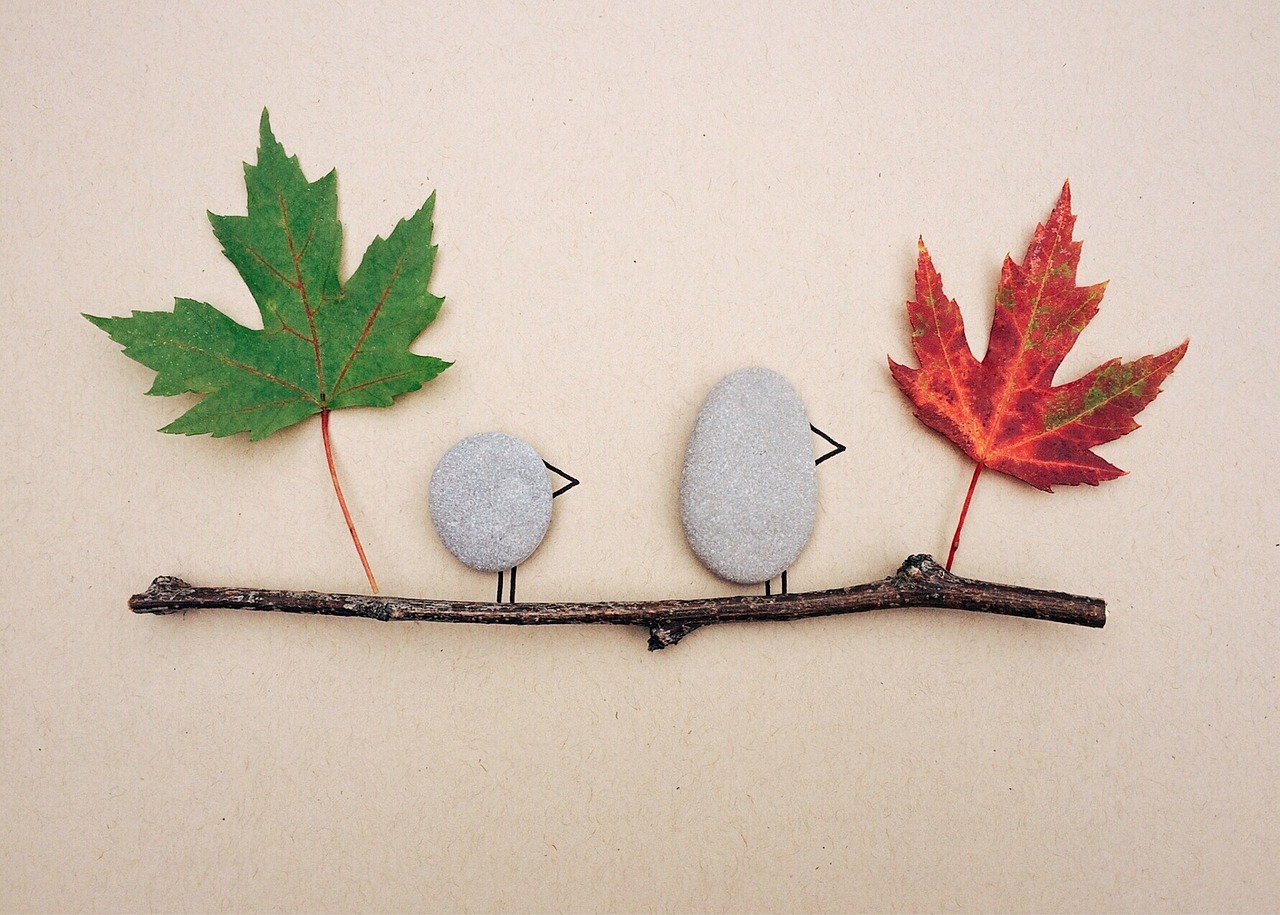
Benefits of Upcycling
Upcycling is not just a creative outlet; it’s a powerful movement that brings with it a multitude of benefits that can positively impact both individuals and the planet. When you take the time to transform what might seem like trash into something beautiful and functional, you’re not just being crafty—you’re making a statement about sustainability and conscious living. Imagine taking a worn-out pair of jeans and turning them into a trendy tote bag. Not only do you save that fabric from ending up in a landfill, but you also create something unique that reflects your personal style!
One of the most significant advantages of upcycling is its environmental impact. By repurposing items, we can reduce waste and lower the demand for new products, which often require extensive resources to create. For instance, consider the following statistics:
| Resource | Impact of Upcycling |
|---|---|
| Plastic Waste | Upcycling can divert millions of tons of plastic from landfills each year. |
| Textile Waste | Upcycling clothing can significantly reduce the carbon footprint associated with textile production. |
Moreover, upcycling can lead to substantial cost savings. Instead of spending money on new home decor or fashion items, why not use what you already have? This not only saves you cash but also allows you to channel your creativity. Think about it: a little paint, some glue, and a dash of imagination can transform an old wooden pallet into a stunning coffee table! You’ll be amazed at how much money you can save by reimagining your discarded items.
Beyond financial benefits, there’s a profound sense of satisfaction that comes from creating something new from old materials. Each upcycled project tells a story and carries a piece of your personality. When you gift an upcycled item, you’re giving a part of yourself, a unique creation that shows thoughtfulness and care. This personal connection is something mass-produced items simply can’t replicate.
Additionally, upcycling can foster a sense of community. Many people are now joining local workshops or online groups dedicated to sharing upcycling ideas and techniques. This collective effort not only spreads awareness about sustainability but also encourages collaboration and creativity among individuals who are passionate about making a difference. Imagine gathering with friends to create beautiful items from your collective stash of old goods—what a fun way to bond!
In summary, the benefits of upcycling are vast and varied. From reducing waste and saving money to enhancing creativity and fostering community, it's a practice that resonates on many levels. So, the next time you look at an old object, ask yourself: how can I give this a new life? The possibilities are endless!
- What materials are best for upcycling? Almost any material can be upcycled, but common choices include plastic bottles, old clothing, glass jars, and wooden pallets.
- Can upcycling be done at home? Absolutely! Many upcycling projects are simple and can be completed with everyday items found around your home.
- Are there any costs associated with upcycling? While upcycling can save you money, there may be small costs for tools or additional materials, but these are often minimal compared to buying new items.
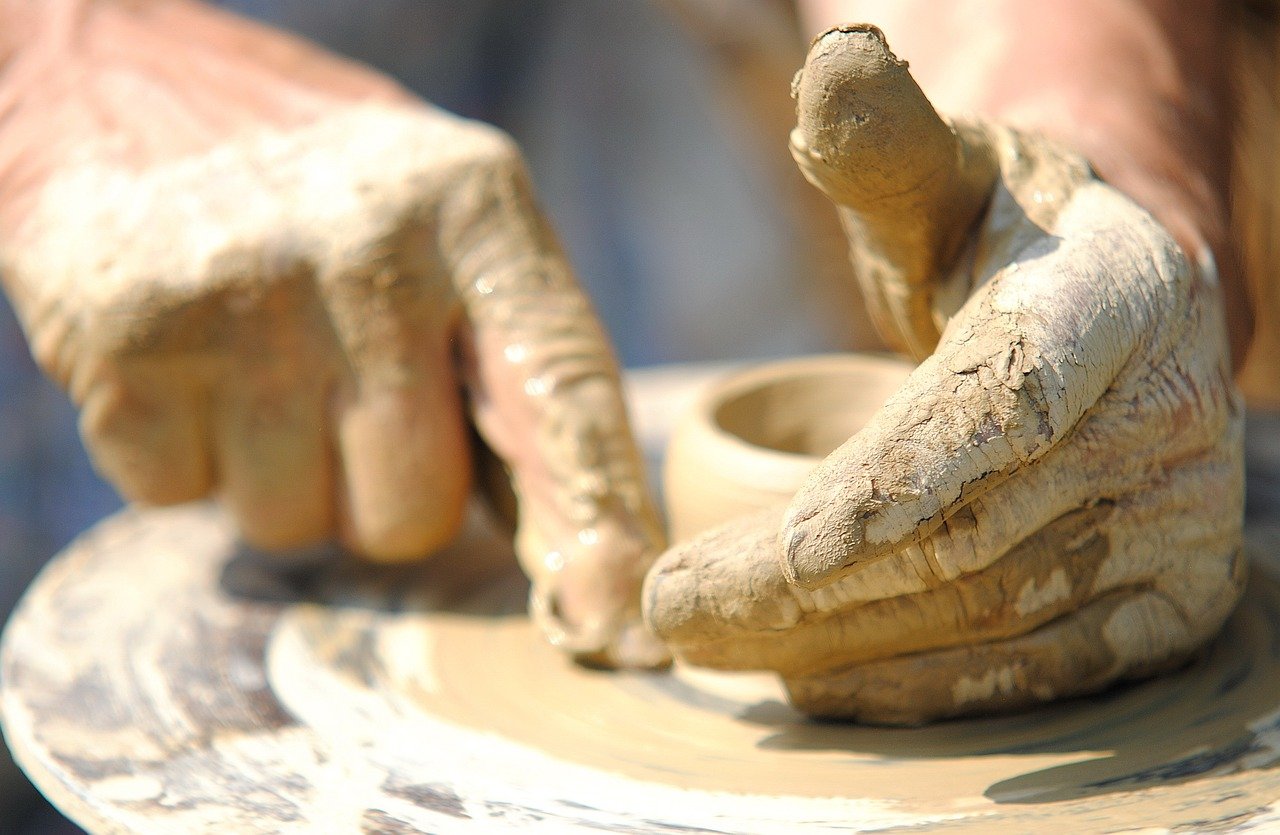
DIY Upcycling Projects
Are you ready to unleash your creativity and transform everyday items into stunning novelty pieces? Upcycling projects are not just fun; they offer a fantastic way to express your artistic flair while being environmentally conscious. The beauty of DIY upcycling lies in its simplicity and accessibility. You don’t need to be a seasoned craftsperson to dive in—just a bit of imagination and a willingness to experiment!
Let’s kick things off with some exciting DIY projects that you can easily follow at home. Each project is designed to be simple yet rewarding, allowing you to create items that are both functional and aesthetically pleasing. Below, we’ve outlined a few ideas that will inspire you to look at your discarded items in a whole new light.
Plastic bottles are everywhere, and instead of tossing them in the trash, why not turn them into charming planters? Start by cutting the bottle in half and using the bottom part as the base. You can paint it to match your decor or wrap it in twine for a rustic look. Fill it with soil and your favorite plants, and voila! You have a unique addition to your garden or windowsill. This not only helps reduce plastic waste but also brings a touch of greenery into your home.
Have a pile of old clothes that you can’t bear to throw away? Transform them into trendy tote bags! Simply cut the sleeves off a t-shirt, turn it inside out, and sew the bottom shut. You can add embellishments like patches or fabric paint to personalize your creation. This project is not only a great way to repurpose fabric, but it also results in a functional item that you can use for shopping or carrying your essentials.
If you enjoy a good glass of wine, you probably have a stash of corks lying around. Instead of discarding them, why not create beautiful coasters? Gather a handful of corks and slice them in half. Arrange them in a circular or square shape and glue them onto a sturdy base, like cardboard or wood. This project is not only easy but also adds a touch of sophistication to your home while keeping your surfaces safe from drink rings.
Empty jars can be transformed into stunning decorative pieces with just a little paint and creativity. You can use mason jars, spice jars, or even old candle holders. Paint them in vibrant colors or wrap them with lace or burlap for a rustic feel. These jars can serve as storage for small items, vases for fresh flowers, or even candle holders to add ambiance to your space.
Old magazines are a treasure trove of colors and images. You can cut out your favorite pictures and create a collage on a canvas or a piece of cardboard. This not only gives new life to old magazines but also allows you to customize your wall art to fit your style. Frame it, and you have a unique piece that reflects your personality and creativity.
Each of these projects not only allows you to create something new but also encourages you to think about sustainability and resourcefulness. Upcycling is about breathing new life into old items, and the satisfaction that comes from creating something with your own hands is truly unmatched. So gather your materials, roll up your sleeves, and start crafting your own upcycled masterpieces!
Curious about upcycling? Here are some frequently asked questions that might help you get started:
- What is upcycling? Upcycling is the process of creatively reusing discarded items to create something new and valuable.
- Do I need special tools for upcycling? Not necessarily! Most upcycling projects can be done with basic tools like scissors, glue, and paint.
- Can I sell my upcycled items? Absolutely! Many people sell their upcycled creations at craft fairs or online platforms.
- Is upcycling expensive? Upcycling can be very cost-effective since it often involves using items you already have at home.
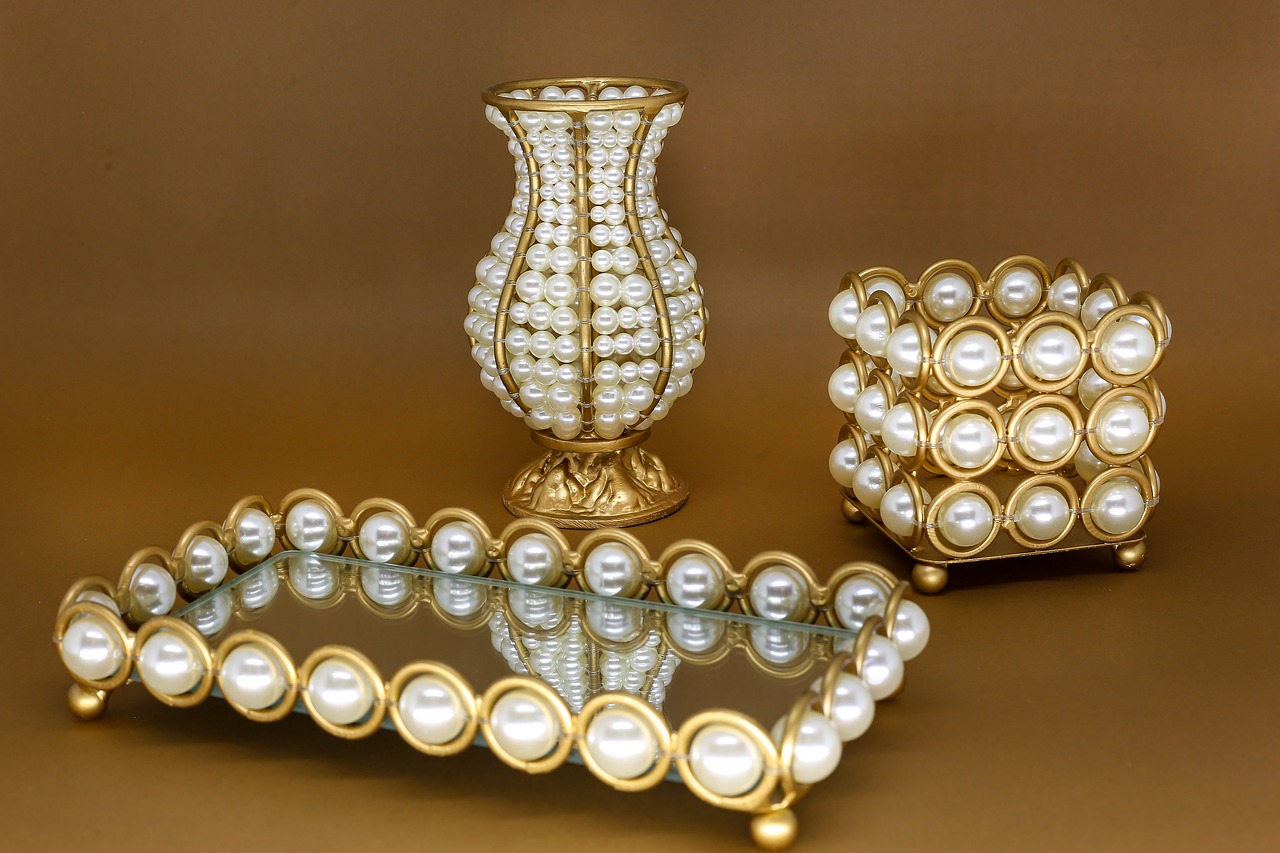
Home Decor Ideas
Transforming everyday objects into stunning home decor is not just a trend; it's an exciting way to express your creativity while being kind to the planet. Imagine walking into your living space and seeing a beautiful piece of art made from something that would have otherwise ended up in the trash. It’s like giving a second life to your belongings! The possibilities are endless, and with a little imagination, you can create unique pieces that not only beautify your home but also tell a story.
One of the most popular upcycling projects involves using glass jars. Instead of tossing those old spaghetti sauce jars, why not turn them into charming candle holders or flower vases? You can paint them, wrap them in twine, or even use them as a base for a rustic lamp. These jars can be transformed into a stunning centerpiece for your dining table or a lovely addition to your windowsill. Plus, they are incredibly versatile and can be adapted to fit any decor style, from modern to vintage.
Another fantastic idea is to repurpose wooden pallets. These often-overlooked items can be transformed into beautiful furniture pieces, like coffee tables or garden benches. With just a bit of sanding and staining, you can create a rustic charm that adds character to any room. Imagine sipping your morning coffee on a stunning pallet coffee table that you crafted yourself! This not only saves money but also gives your home a personalized touch that store-bought furniture simply can't match.
Don't forget about old picture frames. Instead of letting them gather dust in a closet, give them a fresh purpose by turning them into unique wall art. You can paint them in bold colors, create a gallery wall with a mix of sizes, or even use them to frame mirrors or fabric for a chic look. This project allows you to showcase your personality while creating a focal point in your living space.
For those who love a bit of whimsy, consider using tin cans as planters. After enjoying your favorite canned goods, clean them out, paint them, and plant some herbs or flowers. Not only does this add a pop of color to your kitchen or balcony, but it also encourages you to grow your own plants, enhancing your home’s ambiance and air quality. Plus, they make for great conversation starters!
To wrap it all up, the beauty of upcycling is that it allows you to see the potential in what others might consider waste. By creatively reimagining everyday objects, you can craft home decor that is not only beautiful but also meaningful. So, gather your supplies, unleash your creativity, and start transforming your space into something truly special!
Q: What materials are best for upcycling home decor?
A: Almost any material can be upcycled! Common choices include glass jars, wooden pallets, old furniture, picture frames, and tin cans. The key is to think creatively about how to repurpose these items.
Q: Do I need special tools to start upcycling?
A: While some projects may require tools like a saw or drill, many upcycling projects can be done with basic supplies such as glue, paint, and scissors. Start with what you have and build your toolkit as you go!
Q: Can I upcycle items that are damaged?
A: Absolutely! In fact, many upcycling projects thrive on the charm of imperfections. A scratched table can become a rustic centerpiece with a little paint, and a broken chair can be transformed into a unique planter. Embrace the flaws!
Q: Where can I find inspiration for upcycling projects?
A: Inspiration can come from many places! Websites like Pinterest, DIY blogs, and upcycling community groups are great resources. You can also look around your home and think about how you can repurpose items you already own.
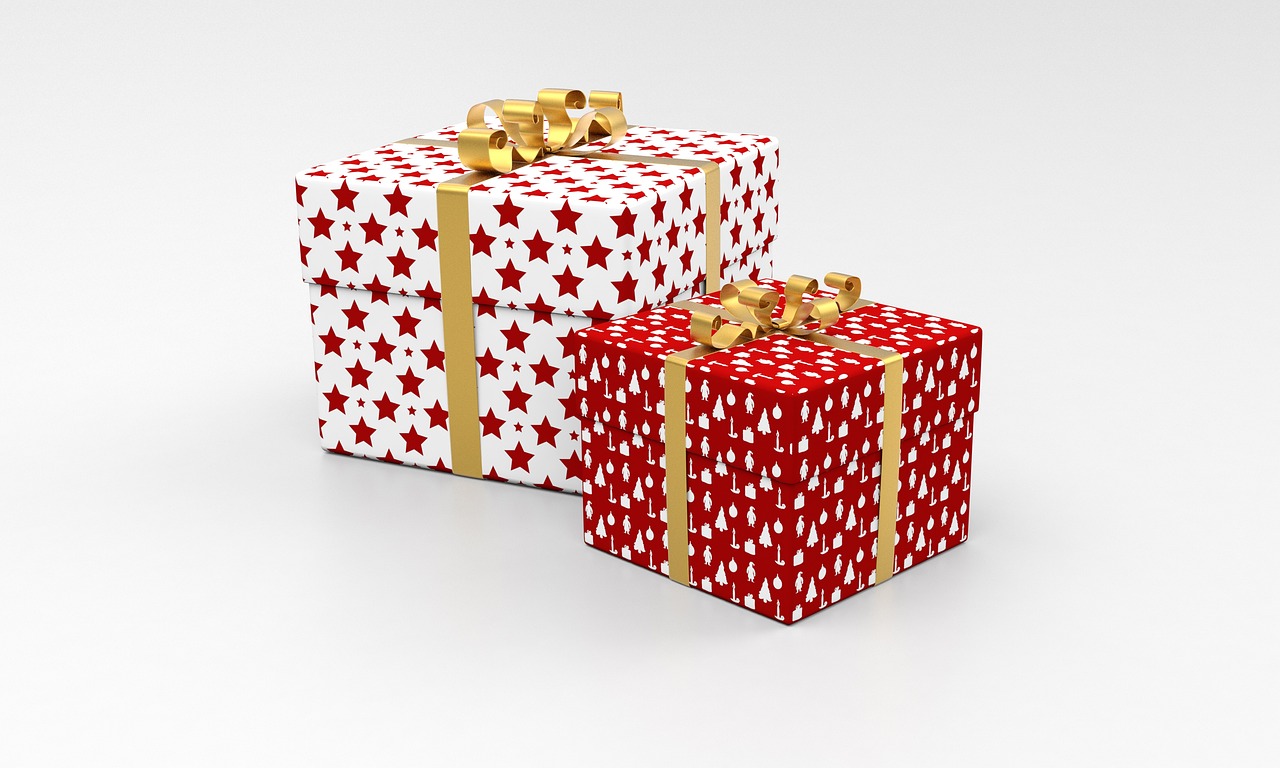
Gifts and Personal Items
When it comes to giving gifts, nothing says “I care” quite like a thoughtfully crafted upcycled item. Imagine the look on your friend’s face when they unwrap a unique treasure made just for them! Upcycling not only shows that you put in the effort, but it also reflects a personal touch that mass-produced gifts simply can’t match. Whether it’s a cozy quilt made from old t-shirts or a chic bag fashioned from denim, the possibilities are endless.
One of the greatest advantages of using upcycled materials for gifts is the ability to create something that truly resonates with the recipient. For instance, if you have a friend who loves gardening, why not transform an old teapot into a charming planter? It’s not just a gift; it’s a conversation starter, a piece of art, and a practical item all rolled into one. This approach not only reduces waste but also breathes new life into items that might otherwise be forgotten.
Here are a few more ideas that highlight how you can turn everyday objects into personalized gifts:
- Jewelry from Old Silverware: Create stunning bracelets or necklaces by bending and shaping old spoons and forks.
- Framed Memories: Use old windows or picture frames to create a collage of cherished photos, giving a nostalgic touch to any space.
- Customized Tote Bags: Repurpose old clothing into stylish tote bags that reflect the recipient's personality.
Moreover, upcycled gifts carry a story. Each item has a history, which adds depth and character to your present. It’s like giving a piece of art that not only serves a purpose but also sparks conversations about sustainability and creativity. When your friends ask where you got such an amazing gift, you can proudly share that it was made from upcycled materials, inspiring them to think twice before tossing away their own items.
In addition to being great gifts, upcycled items can also serve as personal treasures. Imagine crafting a beautiful journal from old book covers or using fabric scraps to create a patchwork throw pillow. Not only do these projects offer a creative outlet, but they also result in items that can be cherished for years to come. These personal items carry memories and stories, making them invaluable to their owners.
In conclusion, the world of upcycled gifts and personal items is rich with creativity and potential. By thinking outside the box and viewing everyday objects through a new lens, you can create meaningful gifts that not only delight the recipient but also contribute positively to the environment. So, the next time you’re in need of a gift, consider diving into your collection of old items and see what magic you can create!
- What is upcycling? Upcycling is the process of transforming waste materials or unwanted products into new items of better quality or for better environmental value.
- Can I upcycle anything? While many items can be upcycled, it's best to focus on materials that are durable and versatile, such as plastic bottles, old clothing, and wood.
- Are there any safety concerns with upcycling? Yes, always ensure that the materials you use are safe and clean, especially if they will be used for food or personal items.
- Where can I find inspiration for upcycling projects? There are countless resources online, including websites, social media platforms, and community groups dedicated to sharing upcycling ideas and tutorials.
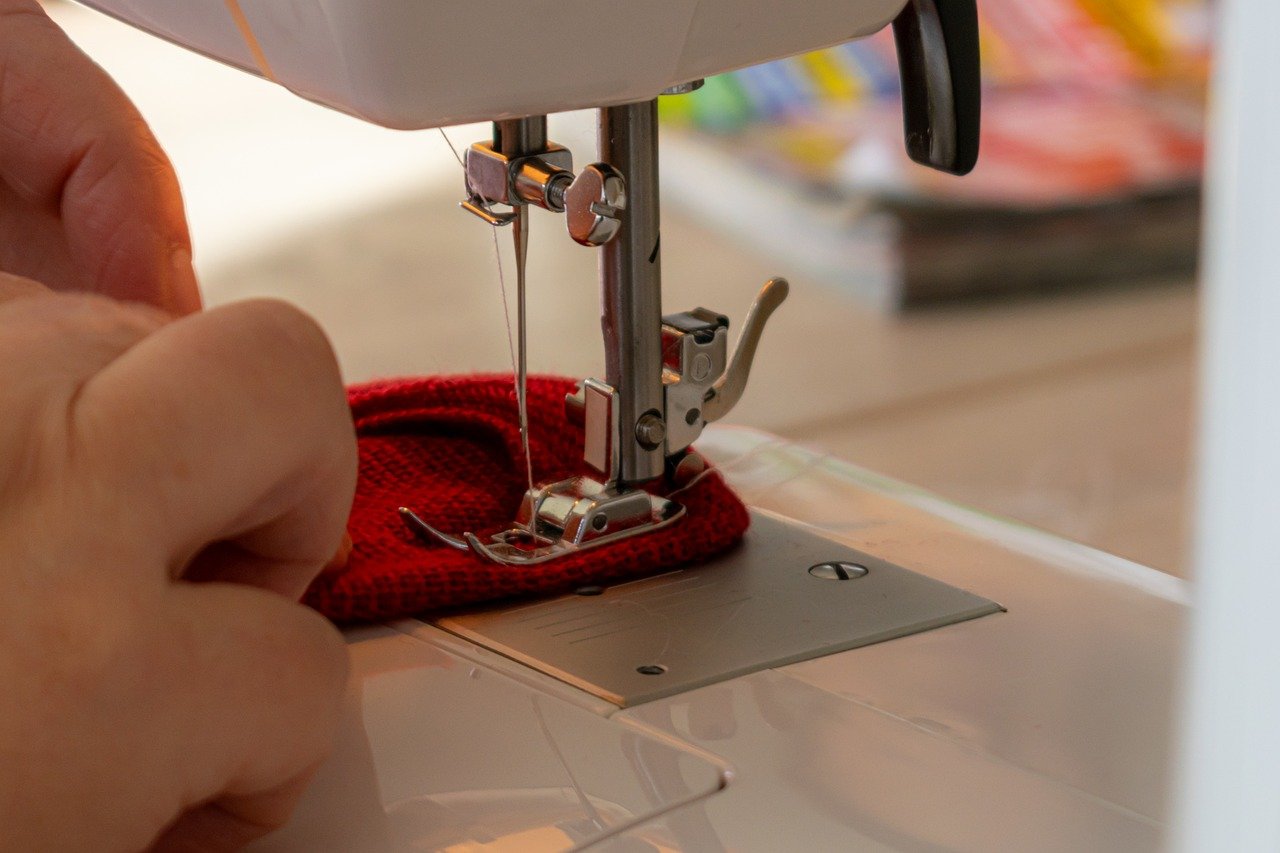
Resources for Upcycling Enthusiasts
For those eager to dive into the world of upcycling, there are a plethora of resources available that can ignite your creativity and help you transform everyday items into unique treasures. Whether you're a novice or a seasoned upcycler, these resources can provide inspiration, guidance, and community support. First off, consider exploring books dedicated to the art of upcycling. Titles like "Upcycle: Beyond Sustainability - Designing for Abundance" and "The Upcycle: Taking Your Life from Waste to Wonderful" offer insightful ideas and practical projects that can fuel your imagination.
In addition to books, the internet is a goldmine for upcycling enthusiasts. Websites such as Upcycle That and Instructables feature a range of tutorials, project ideas, and tips for upcycling various materials. Social media platforms, especially Pinterest and Instagram, are also fantastic places to discover innovative upcycling projects shared by fellow enthusiasts. You can follow hashtags like #Upcycling and #DIYUpcycle to stay updated on the latest trends and ideas.
Moreover, joining community groups can be incredibly beneficial. Look for local upcycling workshops or online forums where you can connect with like-minded individuals. Websites like Meetup can help you find groups focused on sustainability and upcycling in your area. Not only will you gain access to valuable knowledge, but you’ll also make friends who share your passion for creativity and environmental consciousness.
To make it easier for you, here’s a quick overview of some resources:
| Resource Type | Name/Website | Description |
|---|---|---|
| Books | "Upcycle: Beyond Sustainability" | A guide to redesigning waste into valuable products. |
| Websites | Upcycle That | Offers tutorials and project ideas for various materials. |
| Community | Meetup | Find local groups and workshops focused on upcycling. |
Finally, don't underestimate the power of YouTube. Channels dedicated to DIY and upcycling provide step-by-step visual guides that can help you grasp techniques and tricks you might not find elsewhere. Watching someone transform a mundane object into something spectacular can be incredibly motivating!
In essence, the world of upcycling is filled with opportunities to learn, create, and connect. These resources are just the tip of the iceberg. The more you explore, the more you'll discover the joy of giving new life to old items and the satisfaction that comes from being part of a community that values sustainability and creativity.
Q: What is upcycling?
A: Upcycling is the process of transforming waste materials or unwanted products into new materials or products of better quality or environmental value. It's about enhancing the original item rather than simply recycling it.
Q: Can I upcycle anything?
A: While many items can be upcycled, some materials are more suitable than others. Common items include plastic bottles, old clothing, furniture, and glass jars. Always ensure that the item is safe to use and clean before starting your project.
Q: Do I need special skills to upcycle?
A: Not at all! Upcycling can be as simple or as complex as you want it to be. Many projects require basic skills, and there are countless tutorials available to guide you through the process. Start small and gradually take on more challenging projects as you build your confidence!
Frequently Asked Questions
- What is upcycling?
Upcycling is the creative process of transforming waste materials or unwanted products into new items of better quality or environmental value. It's all about giving a second life to everyday objects, turning them into unique novelty items that can be both functional and artistic.
- What are some common items that can be upcycled?
Many everyday items can be upcycled! Some popular choices include:
- Plastic bottles
- Old clothing
- Glass jars
- Cardboard boxes
- Wooden pallets
Each of these items can be transformed into something new and exciting, sparking your creativity.
- What are the benefits of upcycling?
Upcycling offers a variety of benefits, such as:
- Reducing waste and minimizing landfill impact
- Saving money by repurposing items instead of buying new
- Expressing creativity and personal style
- Creating unique gifts and home decor
Plus, there's a special satisfaction that comes from making something beautiful out of something that was once considered trash!
- Can I find DIY upcycling projects online?
Absolutely! There are countless resources available online for DIY upcycling projects. Websites, blogs, and social media platforms are filled with tutorials, inspiration, and step-by-step guides to help you get started on your upcycling journey.
- How do I start my own upcycling project?
Starting your upcycling project is as easy as looking around your home for items you no longer use. Gather your materials, brainstorm ideas, and follow a DIY guide or get creative with your own designs. Remember, the only limit is your imagination!
- Is upcycling expensive?
Not at all! In fact, upcycling can save you money. Most projects utilize items you already have, so the cost is usually minimal. You might need some basic supplies like glue, paint, or tools, but overall, it's a budget-friendly way to create something new.
- What if I’m not crafty? Can I still upcycle?
Of course! Upcycling isn't just for those with crafting skills. Start with simple projects that require minimal tools and skills. As you gain confidence, you can take on more complex creations. It's all about having fun and being resourceful!







